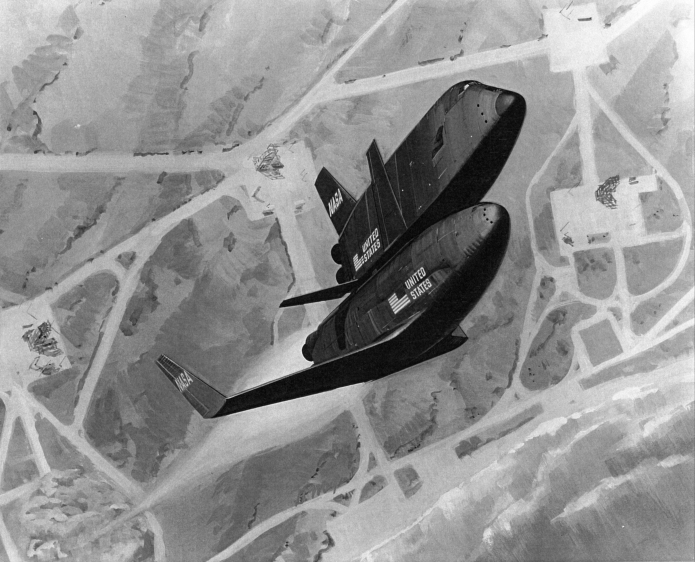The early development of the Space Shuttle was filled with bizarre designs, attempts to jam capabilities into existing technologies. One such unconventional concept came from McDonnell-Douglas: a low-cross-range orbiter atop a flyback booster. The orbiter, unlike the Shuttle Orbiter actually built, contained considerable internal propellant; the booster would get it up to high altitude and velocity, but the bulk of the actual delta V would come from the Orbiters own propulsion. The vehicle had small, straight wings that would fold up against the side of the fuselage for launch and for re-entry… but they would have to deploy on-orbit to allow the payload bay doors to open, and they’d deploy again once the craft had entered the atmosphere.
I’ve uploaded the high-rez version of this artwork (8 megabyte 5598×4529 pixel JPG) to the APR Extras Dropbox folder for 2017-12, available to all APR Patrons at the $4 level and above. If you are interested in accessing this and other aerospace historical goodies, consider signing up for the APR Patreon.

